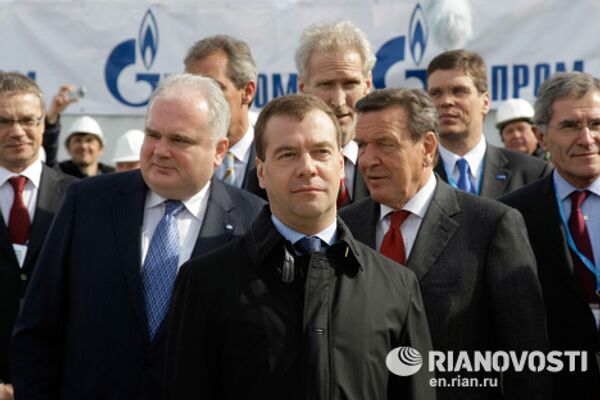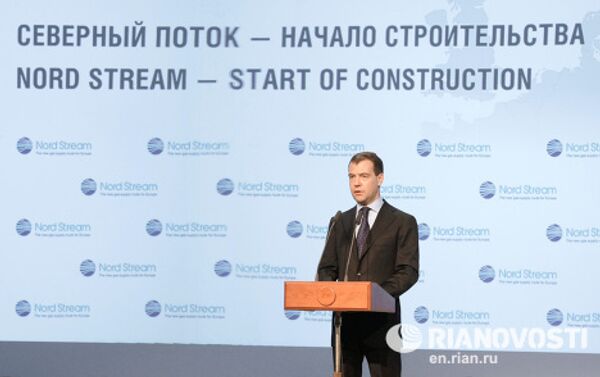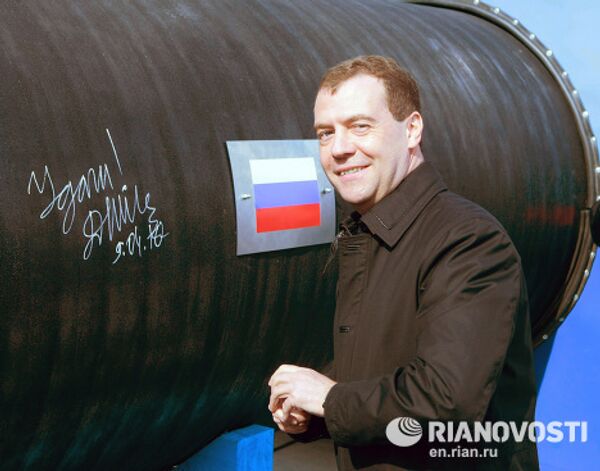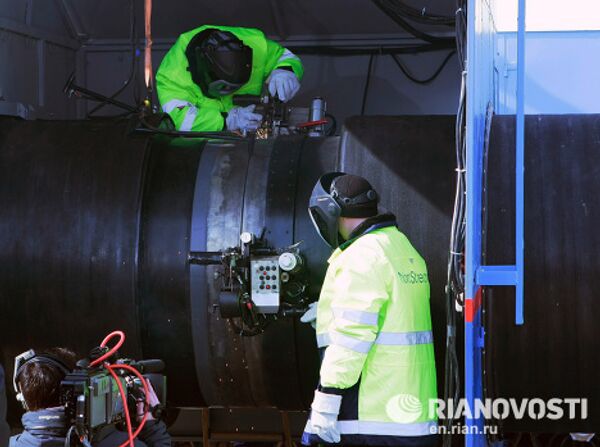On April 9, Russian energy giant Gazprom officially started the construction of Nord Stream, a pipeline to carry Russian gas to western Europe under the Baltic Sea. The first symbolic weld was made in the presence of Russian President Dmitry Medvedev and other dignitaries.

On April 9, 2010. Russian energy giant Gazprom officially started the construction of Nord Stream, a pipeline to carry Russian gas to western Europe under the Baltic Sea. Russian President Dmitry Medvedev, center, Managing Director of Nord Stream AG Matthias Warnig, left, and former German Chancellor and chairman of Nord Stream AG Gerhard Schroeder attended the ceremony near Russian town of Vyborg.

"Despite the intensive search for alternative energy sources, we are convinced that demand for 'blue fuel' in Europe will continue to grow," Dmitry Medvedev said.

The first symbolic weld was made in the presence of Russian President Dmitry Medvedev (foreground, right) and other dignitaries.

He said that everything was done "to guarantee the project's reliability and security."

Nord Stream, whose shareholders include Gazprom, and German and Dutch companies, will consist of twin lines, each with a capacity of 27.5 billion cubic meters a year, extending 1,220 kilometers, the longest underwater pipeline in the world.

